Posts belonging to Category Recording

November 30, 2015
|
Posted by Jon (admin)
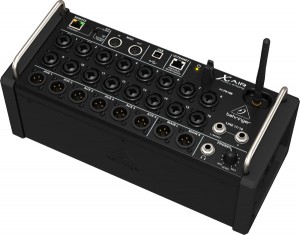
A few months ago, my trusty old analog mixer that I had used since 2008 developed an intermittent short in one of the aux sends. Unfortunately, this was one of only two pre-fader aux sends on this mixer, so I was using it for one of two monitor sends for band rehearsals and live gigs. This board had a total of 4 aux sends, but two of them are post-fader, and are therefore unsuitable for use as a monitor send. (more…)
 Categories: Live Sound, Recording, Reviews, Uncategorized
|
Categories: Live Sound, Recording, Reviews, Uncategorized
|  Tags: behringer, console, digital, Mixer, mixing, Review, wi-fi, wifi, X-Air, X18, Xair, XR18
Tags: behringer, console, digital, Mixer, mixing, Review, wi-fi, wifi, X-Air, X18, Xair, XR18

May 30, 2014
|
Posted by Jon (admin)
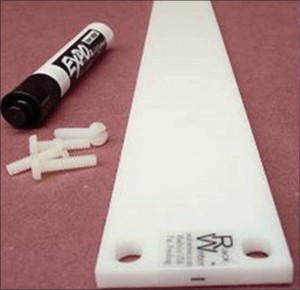
In my studio rack, I now have one dual-channel and three 8-channel rackmount mic preamps (for a total of 26 inputs) that I use for recording all of the vocals and instruments. One of the challenges to any session is remembering which mic is connected to which preamp. On more than one occasion, I’ve found myself twiddling a Gain knob to no avail, only to realize that I grabbed the wrong knob by mistake. So the thought occurred to me–wouldn’t it be nice if I could label each preamp channel somehow, so that I could easily see which one I was actually adjusting? (more…)
 Categories: Recording, Reviews, Tips for Engineers
Categories: Recording, Reviews, Tips for Engineers

November 4, 2013
|
Posted by Jon (admin)
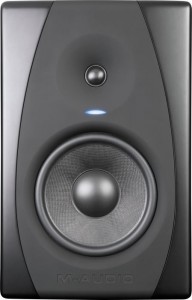
One of the things I love about recording is the passion that other recording enthusiasts have for it. If you’ve frequented any of the popular recording forums (TapeOp, Gearslutz, Homerecording, etc.), you’ll find some very colorful discussions about what gear is best and how best to use it. Occasionally, I’ll discover that there’s a whole mythology that has developed around a certain recording technique (e.g., the “Recorderman” overhead mic placement on drums) or a certain “best practice” that people either swear by, or swear at. Such is the case with whether or not to “burn-in” new studio monitor speakers. (more…)
 Categories: Recording, Tips for Engineers
|
Categories: Recording, Tips for Engineers
|  Tags: burn in, burning in, monitor speakers, new studio monitors
Tags: burn in, burning in, monitor speakers, new studio monitors

November 4, 2013
|
Posted by Jon (admin)
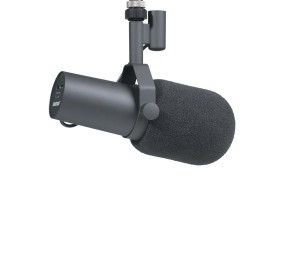
Originally released in 1976, the Shure SM7B has become the stuff of recording legend. It was the mic that was used to record the vocals on the best-selling album of all time: Michael Jackson’s Thriller. It’s still the preferred vocal mic in the studio for many famous Rock vocalists. You’d be hard-pressed to find a recording forum without dozens of threads about the SM7B, and how every engineer should own one. The demand for these mics is so great that you’ll pay almost as much for a used one as you would to buy a new one. (more…)
 Categories: Recording, Reviews, Tips for Engineers
Categories: Recording, Reviews, Tips for Engineers

October 31, 2013
|
Posted by Jon (admin)

If you’re looking to expand the inputs and/or outputs of your recording interface, and that interface comes equipped with ADAT (also sometimes called “Lightpipe” or “Toslink”) inputs and outputs, look no further than the Behringer Ultragain ADA8000. The ADA8000 is an 8-channel Mic/Line preamp and A/D (Analog-to-Digital) converter. But as a bonus, it’s also an 8-channel D/A (Digital-to-Analog) converter. This comes in handy if you need additional analog outputs from your DAW, like maybe for mixing “out of the box” using an analog console, or if you need additional analog outputs for creating headphone mixes for multiple performers while tracking in the studio. (more…)
 Categories: Recording, Reviews, Signal Processing
|
Categories: Recording, Reviews, Signal Processing
|  Tags: ada8000, ada8200, adat, adat interface, behringer, mic preamp, Review, ultragain
Tags: ada8000, ada8200, adat, adat interface, behringer, mic preamp, Review, ultragain

June 5, 2012
|
Posted by Jon (admin)
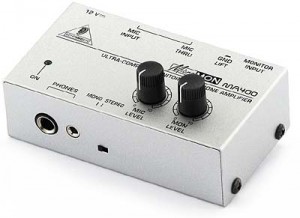
One of the challenges that any engineer faces when recording vocals in the studio is creating a good mix in the headphones for the singer. The goal is to create a nice balance between the singer’s voice (which is being monitored directly from the microphone) and the rest of the recorded mix (the drums, guitars, bass, keys, other vocal tracks, etc.). If the singer can’t hear enough of their own voice in the headphones, they will have a tendency to go off pitch or sing too loudly into the mic. On the other hand, if they hear too much of their voice in the headphones (and not enough of the mix), they will often not be locked in well with the music and sing too softly, therby creating a weak performance. (more…)
 Categories: Recording, Tips for Engineers
|
Categories: Recording, Tips for Engineers
|  Tags: Behringer MA400, monitoring, recording vocals, studio
Tags: Behringer MA400, monitoring, recording vocals, studio

May 11, 2012
|
Posted by Jon (admin)

The Behringer Ultramatch Pro SRC2496 is a Sample Rate & A/D/A Converter that allows you to transfer digital audio between devices with different sample rates, formats, or interfaces, and remove dropouts or jitter from digital media. The various digital outputs can be used simultaneously, allowing the unit to also serve as a digital signal splitter/patchbay. The SRC2496 also provides up to 24-bit/96 kHz A/D/A conversion, making it what could be the most affordable stereo A/D/A converter on the market. (more…)
 Categories: Recording, Reviews
|
Categories: Recording, Reviews
|  Tags: behringer, Review, src2496, ultramatch pro
Tags: behringer, Review, src2496, ultramatch pro

May 9, 2012
|
Posted by Jon (admin)
 For several years, I’ve had some Sennheiser e604’s that I’ve always used for recording the toms on drum kits. Lately though, I had been particularly unimpressed with how my tom tracks have sounded, so I decided to try out a pair of the much-loved-for-toms, CAD M179’s. I only bought two M179’s and set one mic between my two high toms (10″ & 12″) and the other between my two floor toms (14″ & 16″). I engaged the -20 db pad on the M179’s and set the pattern to hypercardioid to try and minimize bleed. (more…)
For several years, I’ve had some Sennheiser e604’s that I’ve always used for recording the toms on drum kits. Lately though, I had been particularly unimpressed with how my tom tracks have sounded, so I decided to try out a pair of the much-loved-for-toms, CAD M179’s. I only bought two M179’s and set one mic between my two high toms (10″ & 12″) and the other between my two floor toms (14″ & 16″). I engaged the -20 db pad on the M179’s and set the pattern to hypercardioid to try and minimize bleed. (more…)
 Categories: Drums, Recording, Reviews, Tips for Engineers
|
Categories: Drums, Recording, Reviews, Tips for Engineers
|  Tags: CAD M179, Drums, Recording, Sennheiser e604, tom mics, toms
Tags: CAD M179, Drums, Recording, Sennheiser e604, tom mics, toms

March 19, 2012
|
Posted by Jon (admin)

A few weeks ago, I was watching the movie Kung Fu Panda with my son. In the film, Po (the Kung Fu Panda), finally learns the secret of both Kung Fu, and of his adoptive father’s noodle soup: there is no secret ingredient. If you’ve seen the movie, you know what I’m talking about. A few days later, I started considering how this same revelation applies to the world of recording. (more…)
 Categories: Recording, Tips for Engineers
|
Categories: Recording, Tips for Engineers
|  Tags: Recording, secrets, tips
Tags: Recording, secrets, tips

November 1, 2011
|
Posted by Jon (admin)
![adat[1]](http://silentsky.net/wordpress/wp-content/uploads/2011/11/adat1.gif)
If you’re confused by the multitude of common digital audio connections available today on many recording interfaces, such as ADAT, S/PDIF, AES/EBU, S/MUX, Word Clock, etc., you owe it to yourself to read this excellent article from Presonus:
Digital Audio Connections and Synchronization

 Categories: Recording, Tips for Engineers
|
Categories: Recording, Tips for Engineers
|  Tags: adat, audio, connections, digital, Recording, spdif
Tags: adat, audio, connections, digital, Recording, spdif
 November 30, 2015
|
Posted by Jon (admin)
November 30, 2015
|
Posted by Jon (admin)

 Categories:
Categories:  Tags:
Tags: 





 For several years, I’ve had some
For several years, I’ve had some 
![adat[1]](http://silentsky.net/wordpress/wp-content/uploads/2011/11/adat1.gif)

